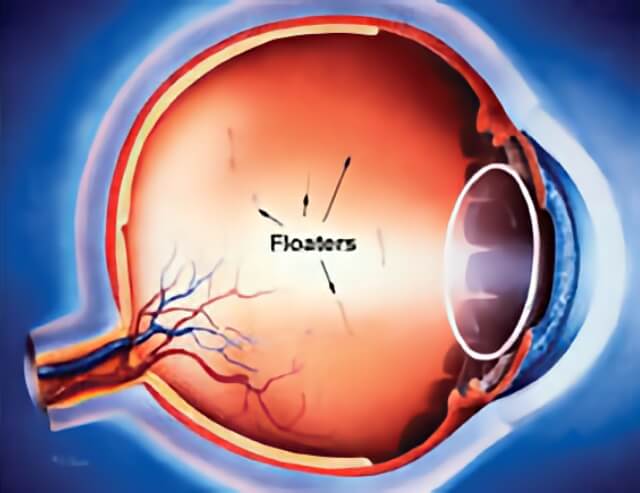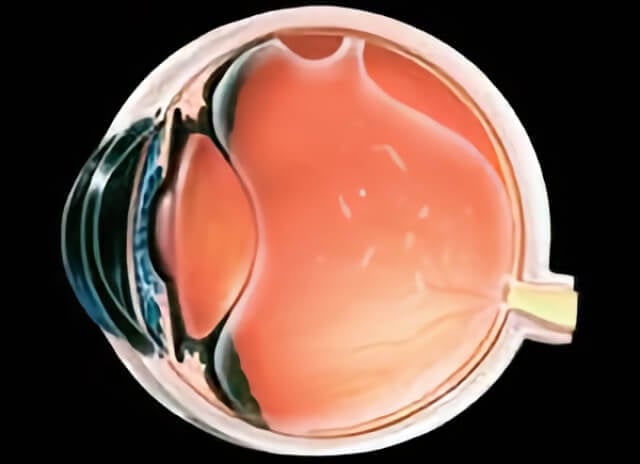Flashers and Floaters
What causes floaters?
Most of the eye’s interior is filled with a transparent gel-like substance called the vitreous. There are millions of fine fibers intertwined within the vitreous that anchor it to the surface of the retina. As we age, these fibers collapse in on themselves creating small pockets of opaque material that cast small shadows on the retina. They are perceived as little “cobwebs” or specks that seem to float about in your field of vision.

Most floaters are small, benign, opacities that form with time in the vitreous cavity in the interior of the eye.
What causes flashes?
Fluid begins to replace the space once occupied by the shrinking vitreous. Usually, the attachments of the delicate fibers to the retina loosen and fall harmlessly away, creating what is known as a posterior vitreous detachment (PVD). Sometimes, the process is more vigorous and actual traction is generated on the retina. This produces quick flashes of light in the visual field.

A posterior vitreous detachment (PVD) occurs when the vitreous gel separates from the retina.
Learn more about posterior vitreous detachment (PVD) at ASRS
Información en español en el sitio web de ASRS
How common are posterior vitreous detachments (PVD’S)?
A vitreous detachment is a common condition that usually affects people over age 50, and is very common after age 80. People who are nearsighted are also at increased risk. Those who have a vitreous detachment in one eye are likely to have one in the other, although it may not happen until years later.
What are the consequences of PVD?
In most cases, a vitreous detachment is not sight threatening and requires no treatment. Either you will not notice a vitreous detachment, or you will find it merely annoying because of the increase in floaters. One symptom of a PVD is a small but sudden increase in the number of new floaters.
Can there be more serious problems with a PVD?
In some patients, the vitreous fibers pull so hard on the retina that they cause a retinal tear or hemorrhage. A retinal tear is sight-threatening because it is the first step toward a retinal detachment. Treatment is needed right away. Therefore anyone experiencing a sudden increase in floaters or in flashes should have an eye care professional examine their eyes as soon as possible.

In some eyes, the vitreous gel is very adherent to the retina in spots and does not separate easily.
What about treatment for flashes and floaters?
In almost all patients, floaters will become less noticeable with time as the brain adjusts to their presence. The floaters will always be somewhat observable-particularly if one eye is covered and you gaze at a light-colored background. There is no way to eliminate these with medication. Sometimes floater symptoms can be improved with laser treatment, but complete removal can be achieved with vitrectromy surgery. Surgery to remove the floaters is rarely advised.
How can I know if I have a serious problem or not?
The only way to diagnose the cause of the problem is by a comprehensive dilated eye examination by an eye care professional.
Schedule Flashers and Floaters Treatment in Northern California with Retinal Consultants Medical Group
Since 1975, Retinal Consultants Medical Group has been providing outstanding care to patients throughout Northern California, including Sacramento, Modesto, and Stockton. Our retina specialists and surgeons treat multiple vitreoretinal conditions, such as age-related macular degeneration and diabetic retinopathy. We invite you to contact us with any questions or schedule an appointment today.


